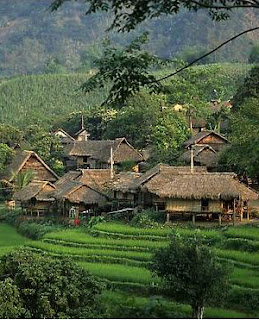Absolute Astronomy. (2010). Disneyfication. Retrieved December 7, 2010, from Absolute Astronomy: http://www.absoluteastronomy.com/topics/Disneyfication
Asian Info. (2000). The Vietnamese Language. Retrieved December 7, 2010, from Asian Info: http://www.asianinfo.org/asianinfo/vietnam/pro-languages.htm
Bureau of East Asian and Pacific Affairs. (2010, November 30). Bureau of East Asian and Pacific Affairs. Retrieved December 7, 2010, from U.S. Department of State: http://www.state.gov/r/pa/ei/bgn/4130.htm
Business-In-Asia. (2005). Interview with Mr. Vu The Binh. Retrieved December 7, 2010, from Business-In-Asia: http://www.business-in-asia.com/vietnam_tourism.html
Definite Journey. (2010, May 27). Vietnam tourism growth ranked forth in the world! Retrieved December 7, 2010, from Definite Journey: http://www.definitejourney.com/vietnam+tourism+growth+ranked+fourth+in+the+world-3-2-0.html
eHow. (2010). Vietnam Tourism Development. Retrieved December 7, 2010, from eHow: http://www.ehow.com/about_5457025_vietnam-tourism-development.html#ixzz17K3OoROG
Ellis, C. (2004). In Culture Shock (pp. 45-46). Singapore: Marshall Cavendish International (Asia).
Encyclopedia of the Nations. (2010). Vietnam - Agriculture. Retrieved December 7, 2010, from Encyclopedia of the Nations: http://www.nationsencyclopedia.com/Asia-and-Oceania/Vietnam-AGRICULTURE.html
has7.com. (n.d.). commodification. Retrieved December 7, 2010, from has7.com: http://www.has7.com/commodification/
IndoChina Odyssey Tours. (2010). Con Throwing Festival. Retrieved December 7, 2010, from IndoChina Odyssey Tours: http://www.indochinaodysseytours.com/vietnam/national/festivals-con-throwing-festival.html
Merriam-Webster. (n.d.). Disneyfication. Retrieved December 7, 2010, from Merriam-Webster: http://www.merriam-webster.com/dictionary/disneyfication
Offroad Vietnam. (n.d.). Festivals, Holidays and Recreation. Retrieved December 7, 2010, from Offroad Vietnam: http://www.offroadvietnam.com/eng/13-63.php
Oracle ThinkQuest. (n.d.). Lifestyles. Retrieved December 7, 2010, from Oracle ThinkQuest: http://library.thinkquest.org/25734/data/culture/lifestyles.html
Pho Bo Restaurant. (n.d.). Vietnamese Cuisine. Retrieved December 7, 2010, from Pho Bo Restaurant: http://www.phoborestaurant.com/
Ritzer, G. (2005). Encyclopedia of social theory, Volume 1. California: Sage Publications, Inc.
Runckel, C. (2009). The Education System in Vietnam. Retrieved December 7, 2010, from Business-in-Asia: http://www.business-in-asia.com/vietnam/education_system_in_vietnam.html
Simply Wood. (n.d.). Lifestyle. Retrieved December 7, 2010, from Simply Wood: http://www.simplywood.us/garland/sea_viet/lifestyle.htm
Spainexchange. (2010). The Languages spoken in Vietnam. Retrieved December 7, 2010, from Spainexchange: http://www.spainexchange.com/guide/VN-language.htm
Trails.com. (2010). Impacts of Tourism in Vietnam. Retrieved December 7, 2010, from Trails.com: http://www.trails.com/list_39950_impacts-tourism-vietnam.html#ixzz17KDVmxVX
Travel Mekong Delta. (n.d.). Vietnam Clothing. Retrieved December 7, 2010, from Travel Mekong Delta: http://www.travelmekongdelta.com/travel-guide-detail/vietnam/vietnam-culture/vietnam-clothing
VietBao. (2009, October 14). Salad Book-fast food of the Vietnamese. Retrieved December 7, 2010, from VietBao: http://vietbao.vn/The-gioi-giai-tri/Goi-cuon-Fastfood-cua-nguoi-Viet/55257763/412/
Vietnam Travel. (2008). Vietnam Tourism Statistics. Retrieved December 7, 2010, from Vietnam Travel: http://www.vietnamtravel.org/vietnam-tourism-statistics
Vietnam-Culture. (2009). Conical Hat (or Non La). Retrieved December 7, 2010, from Vietnam-Culture: http://www.vietnam-culture.com/articles-45-10/Leaf-Hat---Non-La.aspx
Vietnam-Culture. (2009). Contemporary Vietnamese Traditional Weddings. Retrieved December 7, 2010, from Vietnam-Culture: http://www.vietnam-culture.com/contemporary-vietnamese-traditional-weddings.aspx
Vietnam-Culture. (2009). Lullaby Songs. Retrieved December 7, 2010, from Vietnam-Culture: http://www.vietnam-culture.com/articles-40-8/Lullaby-songs.aspx
Vietnam-Culture. (2009). Match Makers in the Past. Retrieved December 7, 2010, from Vietnam-Culture: http://www.vietnam-culture.com/match-maker-in-vietnam-in-the-past.aspx
Vietnam-Culture. (2009). Rice in Vietnam. Retrieved December 7, 2010, from Vietnam-Culture: http://www.vietnam-culture.com/articles-218-34/Rice-in-Vietnam.aspx
Vietnam-Culture. (2009). The Mid-Autumn Festival. Retrieved December 7, 2010, from Vietnam-Culture: http://www.vietnam-culture.com/articles-98-13/The-Mid-Autumn-Festival.aspx
Vietnam-Culture. (2009). The Tay Ethnic Group. Retrieved December 7, 2010, from Vietnam-Culture: http://www.vietnam-culture.com/tay-ethnic-group.aspx
Vietnam-Culture. (2009). The Viet Ethnic Group. Retrieved December 7, 2010, from Vietnam-Culture: http://www.vietnam-culture.com/viet.aspx
Vietnam-Culture. (2009). The Vietnamese Lunar New Year. Retrieved December 7, 2010, from Vietnam-Culture: http://www.vietnam-culture.com/articles-19-13/The-Vietnamese-Lunar-New-Year.aspx
Vietnam-Culture. (2009). The Vietnamese Value System. Retrieved December 7, 2010, from Vietnam-Culture: http://www.vietnam-culture.com/articles-18-6/The-Vietnamese-Value-System.aspx
Vietnam-Culture. (2009). Tuong (Hat Boi). Retrieved December 7, 2010, from Vietnam-Culture: http://www.vietnam-culture.com/articles-37-8/Tuong-(Hat-Boi).aspx
Visit Mekong. (2010). Vietnam History Overview. Retrieved December 7, 2010, from Visit Mekong: http://www.visit-mekong.com/vietnam/history.htm

















































